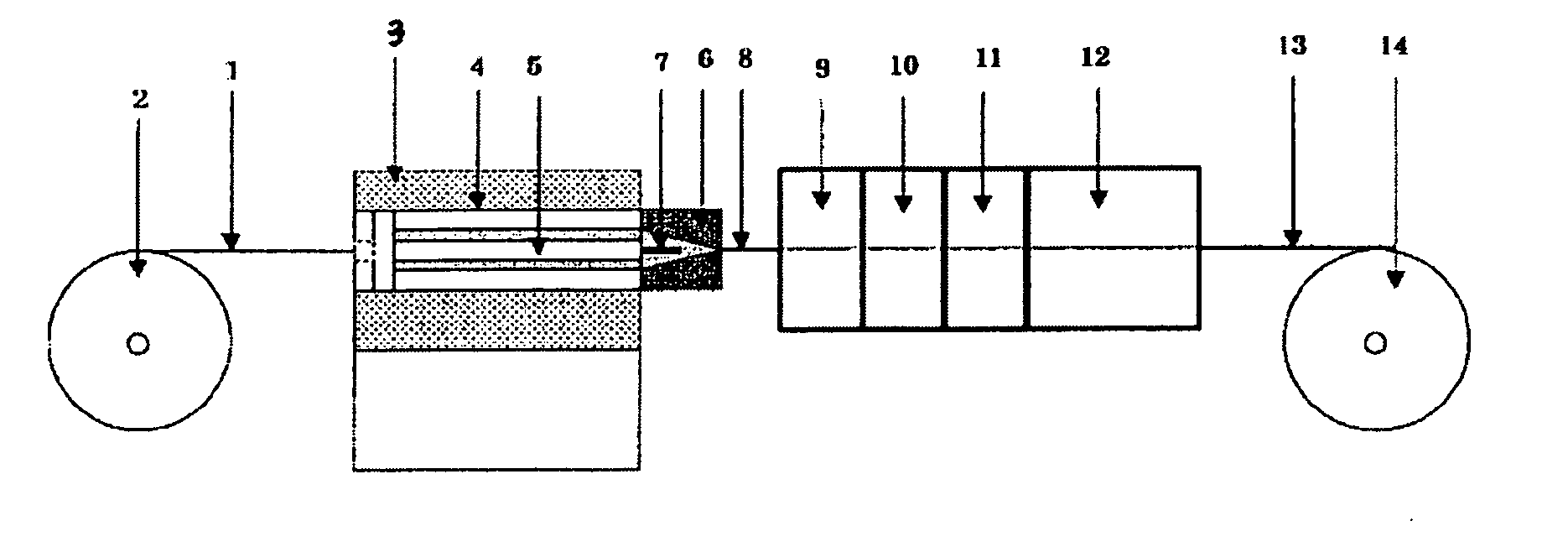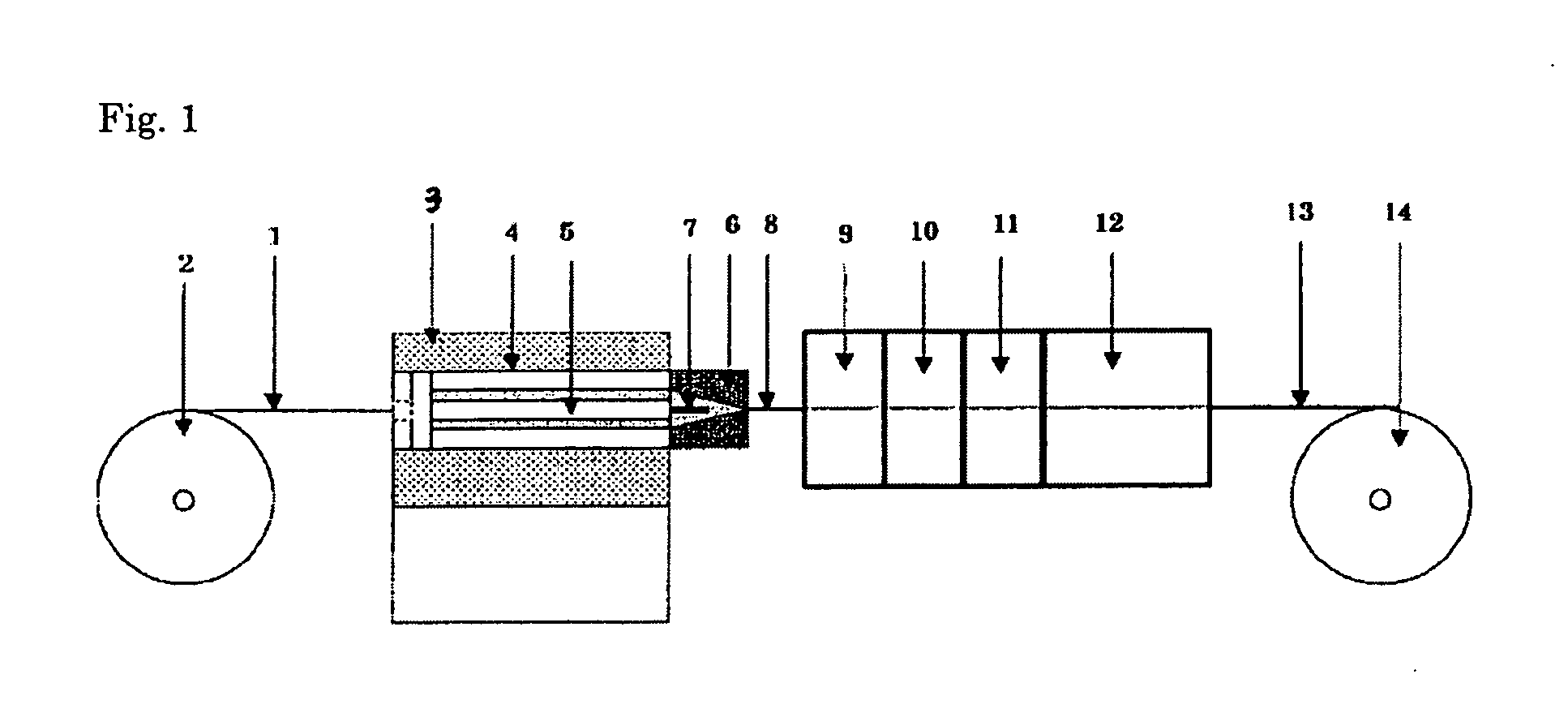Medical catheter tubes and process for production thereof
a technology for medical catheters and tubes, applied in the field of catheter tubes, can solve the problems of unsatisfactory tensile strength of catheters, unsatisfactory kink resistance and positional adjustment efficiency, stretch resistance and torque-transmitting efficiency, etc., and achieves superior stretch resistance, kink resistance and lumen lubricity, and the effect of preventing elongation
- Summary
- Abstract
- Description
- Claims
- Application Information
AI Technical Summary
Benefits of technology
Problems solved by technology
Method used
Image
Examples
example 1
[0104]100 wt parts of a PTFE fine powder A (product name: Polyflon PTFE F-207, produced by Daikin Industries, Ltd) and 56 wt parts of a lubricant A (product name: Kosei Sol FC-1, available from Kosei Trading Co. Ltd., boiling point: 120° C., interfacial tension: 15.5 dyne / cm) were placed in a glass bottle; the mixture was left still in a constant temperature oven at 50° C. for 24 hours for aging, and then, cooled to room temperature and mixed by shaking. After mixing, the mixture was compressed at a pressure of 1.0 MPa for 5 minutes in a preforming cylinder of 18 mmφ in width for preparation of a preform. The primary preform obtained was placed in the cylinder of an extrusion molding machine and preformed additionally at a pressure of 28 MPa for 30 seconds with the head closed, for removal of air bubbles in the preform. The internal diameter of the extruder cylinder 4 in the paste extruder 3 was 18 mm; the external diameter of the extruder mandrel 5 was 12 mm; a die 6 having an inte...
example 2
[0107]A PTFE thin-film tube was prepared in a similar manner to Example 1, except that
[0108]56 wt parts of a lubricant B (product name: Fluorinert FC-40, available from Sumitomo 3 M Ltd., boiling point: 155° C., surface tension: 16.0 dyne / cm) was added. The moldability during paste extrusion was rated O. The tensile strength of the PTFE thin-film tube obtained, as determined at a displacement of 1.0 mm, was 7.6 N / mm2. The kink length determined was 42 mm. The stress after one reciprocation in the lumen lubricity test was 0.45N, while that after 50 reciprocations was 0.47N.
example 3
[0109]A PTFE thin-film tube was prepared in a similar manner to Example 1, except that
[0110]56 wt parts of a lubricant C (product name: Fluorinert FC-43, manufactured by Sumitomo 3 M Ltd., boiling point: 174° C., surface tension: 16.0 dyne / cm) was added. The moldability during paste extrusion was rated O. The tensile strength of the PTFE thin-film tube obtained, as determined at a displacement of 1.0 mm, was 6.4 N / mm2. The kink length determined was 45 mm. The stress after one reciprocation in the lumen lubricity test was 0.43N, while that after 50 reciprocations was 0.45N.
PUM
| Property | Measurement | Unit |
|---|---|---|
| boiling point | aaaaa | aaaaa |
| tensile strength | aaaaa | aaaaa |
| thickness | aaaaa | aaaaa |
Abstract
Description
Claims
Application Information
 Login to View More
Login to View More - R&D
- Intellectual Property
- Life Sciences
- Materials
- Tech Scout
- Unparalleled Data Quality
- Higher Quality Content
- 60% Fewer Hallucinations
Browse by: Latest US Patents, China's latest patents, Technical Efficacy Thesaurus, Application Domain, Technology Topic, Popular Technical Reports.
© 2025 PatSnap. All rights reserved.Legal|Privacy policy|Modern Slavery Act Transparency Statement|Sitemap|About US| Contact US: help@patsnap.com


